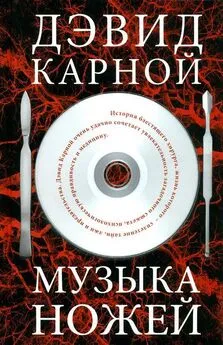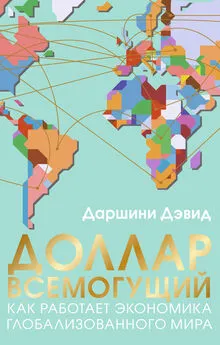Дэвид Бирн - Как работает музыка
- Название:Как работает музыка
- Автор:
- Жанр:
- Издательство:Литагент Альпина
- Год:2020
- Город:Москва
- ISBN:978-5-0013-9280-4
- Рейтинг:
- Избранное:Добавить в избранное
-
Отзывы:
-
Ваша оценка:
Дэвид Бирн - Как работает музыка краткое содержание
Как работает музыка - читать онлайн бесплатно ознакомительный отрывок
Интервал:
Закладка:
85
Шатокуа представляет собой внеконфессиональное общественное движение по распространению образования среди взрослых жителей отдаленных районов, инициированное американской методистской церковью. Занятия включали преподавание наук, музыки, театральные и цирковые представления и другие информационно-просветительные мероприятия. Движение постепенно утратило смысл и прекратилось в 1920-е в связи с широким распространением автомобилей, радио, кинематографа, а затем и телевидения.
86
What Good Are the Arts? by John Carey, Faber & Faber, 2005, p. 34–36.
87
“The Menace of Mechanical Music,” by John Philip Sousa, originally published in Appleton’s Magazine vol. 8, 1906.
88
Capturing Sound: How Technology Has Changed Music , by Mark Katz, University of California Press, 2010, p. 70.
89
“What’s Wrong with Classical Music?” by Colin Eatock, 3 Quarks Daily , October 4, 2010. 3quarksdaily.com/3quarksdaily/2010/10/whats-wrong-with-classical-music.html .
90
Ibid.
91
Кант И. Сочинения: В 6 т. Т. 5. – М.: Мысль, 1966. С. 375–376.
92
What Good Are the Arts? , by John Carey, Faber & Faber, 2005, p. 11.
93
Ibid., p. 97.
94
Ibid., p. 97–99.
95
Ibid., p. 101.
96
The Blockbuster attendance figures can be found here: blogs.artinfo.com/realcleararts/2011/08/08/wait-a-minute-further-thoughts-on-two-blockbuster-shows .
97
What Good Are the Arts? by John Carey, Faber & Faber, 2005, p. 20–32.
98
Ibid., p. 25.
99
Ibid., p. 90.
100
Ibid., p. 60.
101
Ibid., p. 61.
102
Criticisms on Art, by William Hazlitt, Nabu Press, 2011, p. 110.
103
Patronizing the Arts, by Marjorie Garber, Princeton University Press, 2008, p. 52.
104
Ibid., p. 54.
105
“Design for Living,” by Paul Goldberger, The New Yorker, April 4, 2011.
106
What Good Are the Arts? by John Carey, Faber & Faber, 2005, p. 132–133.
107
Perfecting Sound Forever: An Aural History of Recorded Music , by Greg Milner, Faber & Faber, 2010, p. 119.
108
Совершенно неясно, откуда Дэвид Бирн позаимствовал эту информацию. Несмотря на то что джаз в СССР того времени не приветствовался и существуют известные тезисы М. Горького, за музыку в тюрьму не сажали. Кстати говоря, и в Китае с поп-музыкой все неплохо, и хип-хоп на Кубе не то чтобы легализован, но уже не имеет того андеграундного оттенка, каким отличался в 1990-х. Сказанное не означает, что у рок- и хип-хоп-музыкантов этих стран не могло быть проблем. Могли быть и были.
109
“A Metropolitan Opera High Note, as Donations Hit $182 Million,” by Daniel J. Wakin, New York Times, October 10, 2011. nytimes.com/2011/10/11/arts/music/metropolitan-operas-donations-hit-a-record-182-million.html?pagewanted=all .
110
“L. A. Opera’s ‘Ring’ Cycle May Be in the Red,” by Mike Boehm, Los Angeles Times , May 29, 2010. articles.latimes.com/2010/may/29/entertainment/la-et-ring-tickets-20100529 .
111
“A Metropolitan Opera High Note, as Donations Hit $182 Million,” by Daniel J. Wakin, New York Times, October 10, 2011. nytimes.com/2011/10/11/arts/music/metropolitan-operas-donations-hit-a-record-182-million.html?pagewanted=all .
112
“Reader Response: Orchestras Are Overextended,” by Daniel J. Wakin, New York Times , April 22, 2011. artsbeat.blogs.nytimes.com/2011/04/22/reader-response-orchestras-are-over-extended .
113
Cэндвич-«утопленник» – блюдо мексиканской кухни, особенность которого заключается в том, что сэндвич частично или полностью погружают в соус из перца чили.
114
“Los galeones en el siglo XXI. El Roxy, un ejemplo de art deco tapatio,” in Replicante vol. 3, no. 12, Summer 2007.
115
What Good Are the Arts? by John Carey, Faber & Faber, 2005, p. 40.
116
“Beyond Baby Mozart: Students Who Rock,” by David Bornstein, New York Times , September 8, 2011. opinionator.blogs.nytimes.com/2011/09/08/beyond-baby-mozart-students-who-rock .
117
“Rock Is Not the Enemy,” by David Bornstein, New York Times , September 13, 2011. opinionator.blogs.nytimes.com/2011/09/13/rock-is-not-the-enemy .
118
“Strings Attached: What the Venezuelans Are Doing for British Kids,” by Ed Vulliamy, The Observer, October 3, 2010.
119
Ibid.
120
Ibid.
121
“Let’s Get Serious About Cultivating Creativity,” by Steven J. Tepper & Georde D. Kuh, The Chronicle of Higher Education, September 4, 2011. chronicle.com/article/Lets-Get-Serious-About/128843 .
122
Musicophilia: Tales of Music and the Brain , by Oliver Sacks, Knopf, 2007, p. 102.
123
What Good Are the Arts? , by John Carey, Faber & Faber, 2005.
124
“Transform Education? Yes, We Must,” by Sir Ken Robinson, The Huffington Post , January 11, 2009. huffingtonpost.com/sir-ken-robinson/transform-education-yes-w_b_157014.html .
125
The Thinking Ear: Complete Writing on Music Education, by R. Murray Schafer, Arcana Editions, 1986, p. 246–248.
126
Selected Essays and Readings: On the Origin of Music , by Robert Fink, Greenwich Publishing, 2003.
127
The Secret Teachings of All Ages: An Encyclopedia Outline of Masonic, Hermetic, Qabbalistic and Rosicrucian Symbolical Philosophy , by Manly P. Hall, Jeremy P. Tarcher/Penguin, 2003, p. 252.
128
The Harmony of the World , by Johannes Kepler, American Philosophical Society, 1997, p. 440.
129
“The Heliocentric Pantheon: An Interview with Walter Murch,” by Geoff Manaugh, BLDG Blog, April 2007. bldgblog.blogspot.com/2007/04/heliocentric-pantheon-interview-with.html .
130
The Music of Pythagoras: How an Ancient Brotherhood Cracked the Code of the Universe and Lit the Path from Antiquity to Outer Space , by Kitty Ferguson, Walker Publishing Company, 2008, p. 239.
131
“Ether Ore: Mining Vibrations in American Modernist Music,” by Douglas Kahn, in Hearing Cultures: Essays on Sound, Listening and Modernity, Veit Erlmann, ed., Berg Publishers, 2004, p.127.
132
“In Search of Music’s Biological Roots,” by Ker Than, Duke Magazine vol. 94, no. 3, May – June 2008. alumni.duke.edu/magazine/articles/search-musics-biological-roots .
133
“A Sonorous, Smiling City,” by Kerri MacDonald and Béatrice de Géa, New York Times , March 16, 2011.
134
“Cage’s Place in the Reception of Satie,” by Matthew Shlomowitz, 1999. shlom.com/?p=cagesatie .
135
Мантовани – англо-итальянский композитор, дирижер, руководитель оркестра, «самый успешный британский музыкант добитловской эпохи» (как писали в справочнике British Hit Singles & Albums). В американском хит-параде US Top 30 в 1959 году было одновременно шесть его альбомов. Характерная особенность аранжировок Мантовани – упоминаемые Бирном пышные, ниспадающие каскадом струнные.
136
“Experimental Music,” by John Cage, statement given as an address to the convention of the Music Teachers National Association in Chicago in 1957. kim-cohen.com/seth_texts/artmusictheorytexts/Cage%20Experimental%20Music.pdf .
137
Outsider: John Rockwell on the Arts, 1967–2006, Limelight Editions, 2006, p. 210.
138
Строго говоря, эолифон является не ударным, а шумовым инструментом, поскольку представляет собой цилиндрический барабан с насечками, закрепленный в раме и покрытый шелестящей материей. При вращении барабана получается звук, напоминающий шум ветра.
139
Вероятно, Бирн имеет в виду книгу «Великий оркестр животных: В поисках источников музыки в диких уголках мира» (The Great Animal Orchestra: Finding the Origins of Music in the World’s Wild Places. – Little Brown, NY, 2012).
140
“Experimental Music,” by John Cage, statement given as an address to the convention of the Music Teachers National Association in Chicago in 1957. kim-cohen.com/seth_texts/artmusictheorytexts/Cage%20Experimental%20Music.pdf .
Интервал:
Закладка:










